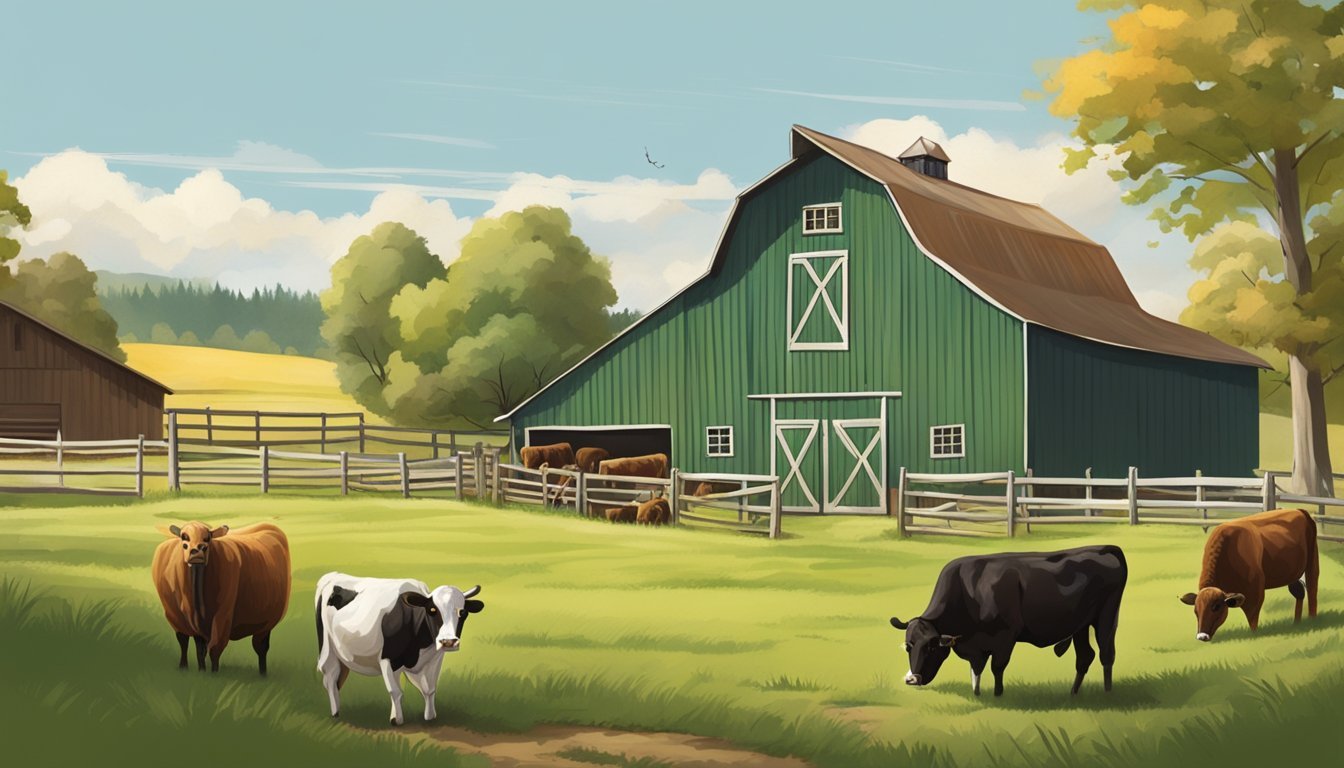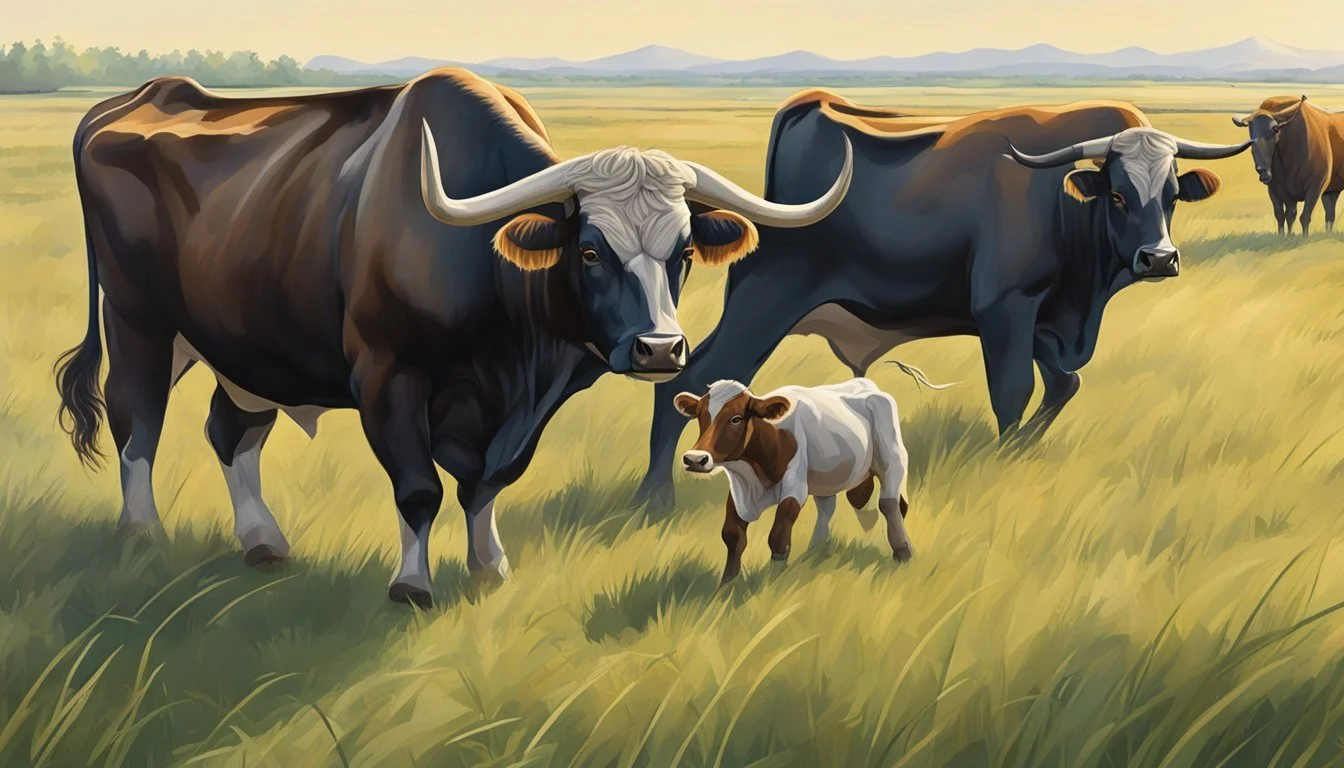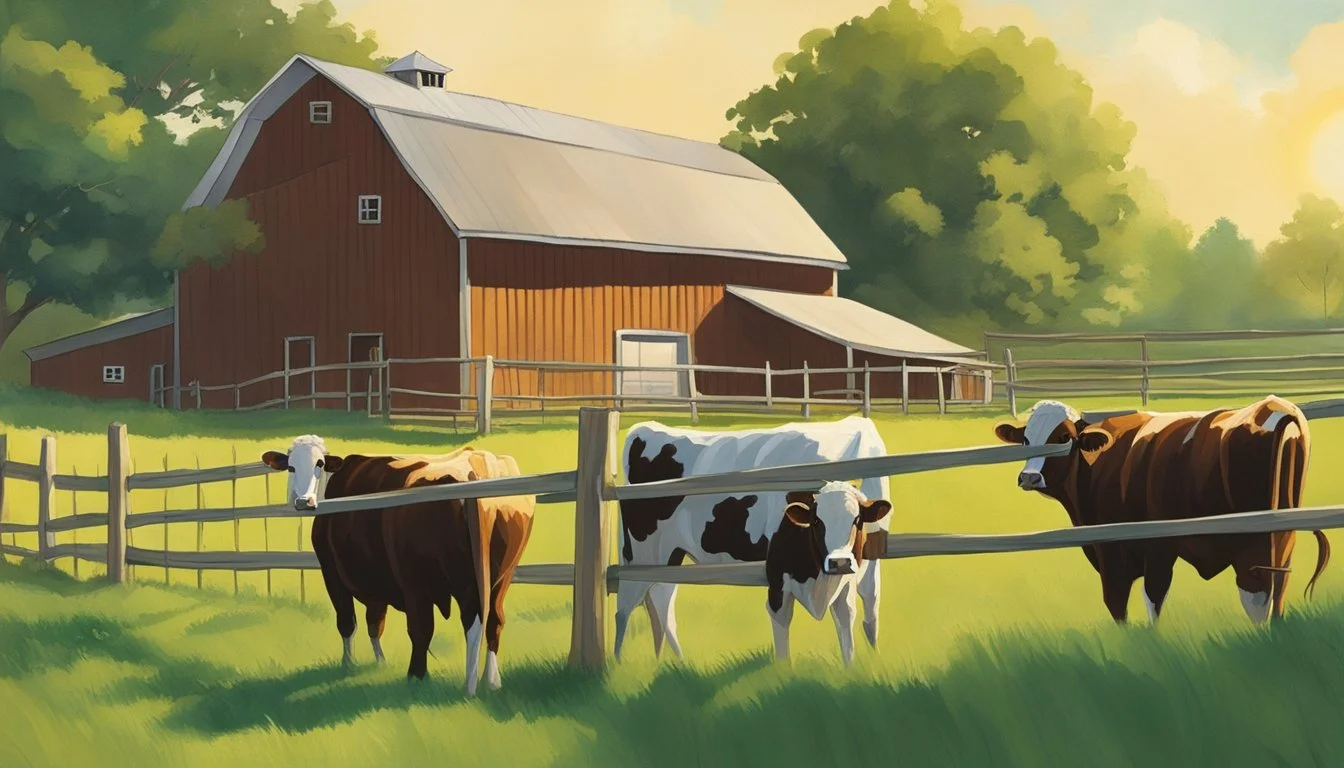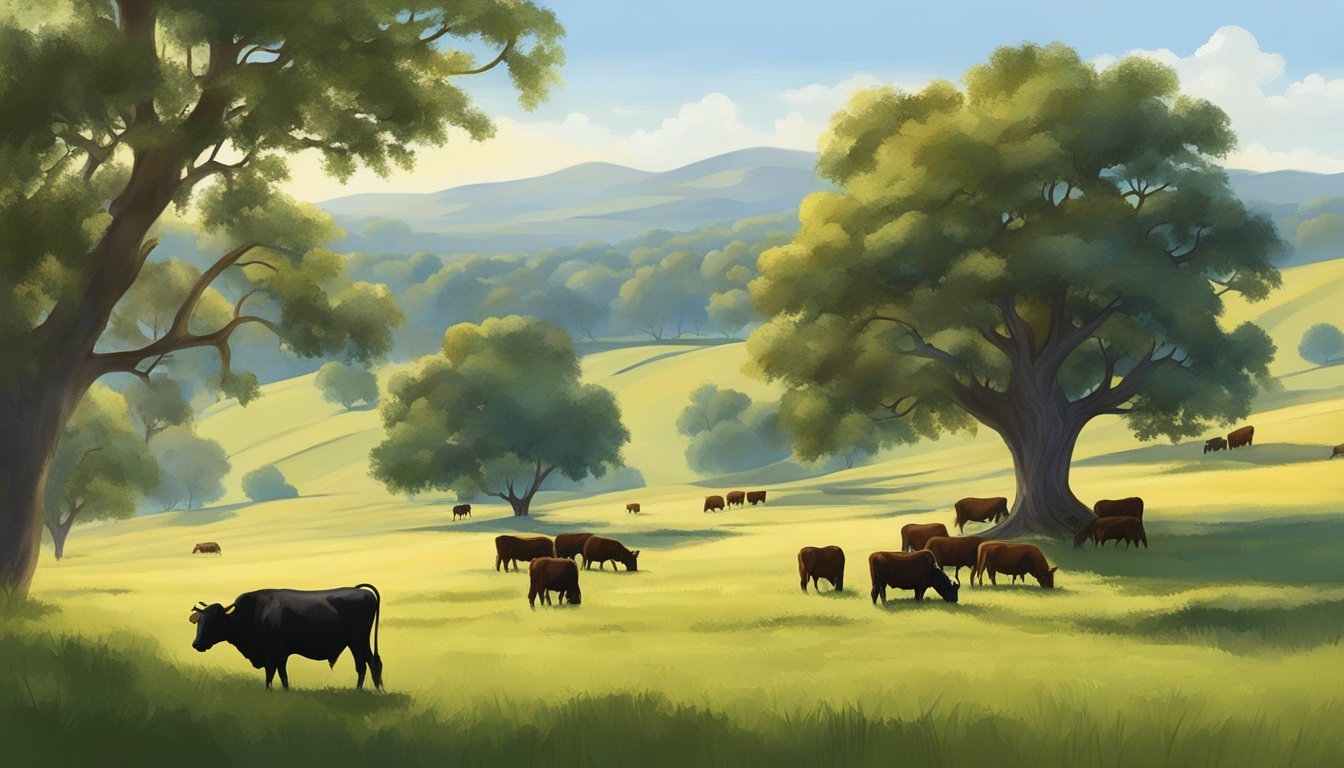The Ultimate Guide to Raising Dexter Cattle for Beginners
Essential Tips for Success
Dexter cattle present an attractive option for those venturing into the world of cattle breeding, particularly beginners and homesteading enthusiasts. Originating from Ireland, Dexter cattle are a small, versatile breed, well-regarded for their adaptability to various climates and their ability to thrive on different diets, ranging from pasture-based forage to grain supplements. Their compact size and generally docile nature make them an excellent choice for smaller farms where space and resources might be at a premium.
For individuals just starting their homesteading journey, Dexter cattle can serve as a manageable entry point into livestock farming. Their hardiness and efficient feed conversion are advantages for new farmers learning to maximize productivity and manage their land sustainably. Moreover, their dual-purpose nature, providing both quality milk and meat, offers a flexible avenue for diversifying farm output.
With proper husbandry practices, including dehorning, vaccination, and castration when necessary, Dexter cattle can be raised to meet market demands, which often favor well-cared-for animals. Understanding the specific needs of these cattle, from health management to their social behaviors, is crucial for anyone aiming to raise them successfully. These factors, combined with a focus on good breeding practices to maintain traits like size and temperament, set the stage for a fruitful endeavor in raising Dexter cattle.
Understanding Dexter Cattle
Dexter cattle are a versatile and resilient breed, ideal for small-scale operations. Originating from Ireland, this small-sized breed has been embraced for its manageable size, variety of colors, and agreeable temperament.
Breed History and Origin
Dexter cattle hail from Ireland, with historical records dating back to the early 18th century. They were first imported to America in the early 1900s, and the American Dexter Cattle Association was formed to maintain breed standards and records.
Origin: Ireland
Import to America: Early 1900s
Association: American Dexter Cattle Association
Physical Characteristics
Dexters are one of the smallest of cattle breeds. They typically stand between 36-44 inches in height at the shoulder and weigh around 400-700 pounds for cows and 1,000 pounds for bulls. Their coat comes in three primary colors:
Black: most common
Red: ranging from a light to a deep shade
Dun: pale brown or golden
Dexter cows can be either naturally horned or polled (without horns), and their physique is well-rounded with a broad body and sturdy legs. The breed's small size contributes to their adaptability and ease of handling.
Temperament and Behavior
Dexters are known for their calm and gentle temperament. They are typically easy to manage and can be quite docile, which makes them a preferred choice for those with small holdings or limited experience with cattle. Their behavior is often described as:
Calm: cooperative and not easily spooked
Gentle: friendly with handlers
These characteristics of Dexter cows contribute to their popularity among small-scale farmers and homesteaders.
Health and Nutrition
Maintaining the health and nutrition of Dexter cattle is essential for their growth, productivity, and overall well-being. They require a balanced diet rich in protein and proper health management to thrive.
Feeding Requirements
Pasture: Dexter cattle are well-suited for grazing and should be provided with access to high-quality pasture. Pasture feeding should make up 60-80% of their diet. The grass-fed approach not only enriches the nutrient content of their products but also supports their digestive system.
Roughage: Fresh pasture, hay, and grass silage are fundamental to provide adequate fiber.
Protein: Amino acids in the protein are vital for growth and repair in cattle. It can be sourced from the natural forage base.
Grains: For additional calories, particularly during growth or lactation, grains like corn, oats, and barley can be supplemented.
Common Health Issues
Dexter cattle, while a hardy breed, can be susceptible to certain health problems which require vigilant monitoring and timely interventions.
Parasites: Regular deworming is important to manage internal parasites, which can impede nutrient absorption.
Respiratory diseases: Vaccination programs and proper ventilated housing can reduce the risk of respiratory issues.
Hoof issues: Proper hoof care and regular checks prevent lameness and associated complications.
Nutrition: A deficiency in essential nutrients can lead to health issues; therefore, a balanced diet is pivotal to prevent diseases. Ensuring access to clean water, trace minerals, and vitamins rounds out their dietary needs.
Housing and Land Management
To ensure the well-being and productivity of Dexter cattle, beginners must prioritize proper shelter and land management. A balance between comfortable housing and effective pasture management is crucial for these hardy animals, even on a small homestead.
Shelter and Housing Basics
Dexter cattle require shelter that provides protection from extreme weather conditions, whether that's intense summer heat or winter cold. Shelter specifics include:
Ventilation: Adequate airflow to maintain a dry and cool environment.
Space: A minimum of about 50 square feet per animal inside the housing to prevent overcrowding.
Accessibility: Easy access to food, water, and outdoor grazing areas.
Shelters can be as simple as three-sided structures to provide a windbreak or more complex barns for complete coverage. Regardless of the design, they must be sturdy enough to withstand various climates and provide a safe, comfortable environment for the cattle.
Grazing and Pasture Management
Effective land management ensures that Dexter cattle have sufficient space to graze and access to quality forage. Key aspects of grazing and pasture management include:
Acreage: Approximately 1 to 2 acres per head of cattle to avoid overgrazing.
Rotation: Implementing a rotational grazing system to maintain pasture health and provide rest periods for regrowth.
Pasture Quality: Regularly checking for and removing toxic plants and ensuring a variety of grasses and legumes to meet nutritional needs.
Proper fencing is essential to keep cattle within designated grazing areas and protect them from potential predators. Homesteaders should adapt practices to their specific climates, modifying techniques to sustain pastures during dry or cold seasons.
Breeding and Reproduction
Breeding Dexter cattle requires understanding their specific reproductive characteristics. Successful breeding strategies lead to healthy calves and contribute to the viability of a farm's cattle operation.
Breeding Strategies
Dexter cattle are typically bred naturally, with bulls introducing to cows during the breeding season. They can be bred year-round, but farmers should plan for the gestation period, which averages 283 days. It is noted that bull calves may have a marginally longer gestation period than heifer calves, sometimes one week more. A Dexter bull should be healthy, well-conformed, and exhibit good maternal instincts to ensure the best breeding outcomes. When pairing, one should note that the actual breeding date might be during the following heat if the gestation goes beyond the 10-day window of the due date.
Breeding Age: Bulls can start breeding at 12 months, while cows are generally bred after reaching 18 months.
Heat Cycle: Cows exhibit heat approximately every 21 days.
Breeding Ratio: Ideally, maintain one bull for every 15 to 20 cows to ensure effective breeding.
Caring for Calves
Once calves are born, they benefit from the strong maternal instincts of Dexter cows. Calves should be monitored to ensure they are nursing properly and gaining weight. The care taken in the early stages is crucial for their development and future productivity.
Colostrum: Calves must receive colostrum within the first few hours for necessary antibodies.
Weaning: Calves can be weaned between 6 to 8 months of age.
Health Checks: Conduct regular health assessments for timely vaccinations and to treat any potential issues.
Through careful management of breeding and diligent care for calves, farmers can foster a thriving Dexter cattle herd.
Dexter Cattle for Meat and Dairy
Dexter cattle are renowned for their efficient meat and dairy production, yielding quality beef with excellent marbling and milk with high butterfat content suitable for a range of dairy products.
Meat Production and Quality
Beef Production: Dexter cattle are notable for their beef, which is considered premium due to its tenderness and flavorful marbling. These cattle reach a carcass weight that is smaller than larger breeds, reflecting their overall stature, but this does not detract from the quality of the meat produced. The manageable size of Dexter cattle makes them suitable for small-scale farming operations.
Tenderness: The beef from Dexter cattle is characterized by its succulence and soft texture, making it a sought-after choice for culinary uses.
Marbling: Marbling refers to the intramuscular fat that is dispersed within the muscle, and Dexter cattle produce meat with a desirable amount of this feature, enhancing both flavor and juiciness.
Milking for Dairy Production
Milk Production: When it comes to dairy, Dexter cows are efficient milk producers with milk that is particularly high in butterfat content, averaging around 4%, which can even exceed that of other popular dairy breeds. Their milk is ideal for producing a range of dairy products, including cheese, due to its creaminess and richness.
Butterfat Content: The elevated butterfat levels in Dexter cattle milk lend themselves to the production of richer, higher-quality cheeses and other dairy products.
Dairy Products: Due to the high butterfat and overall milk quality, products made from Dexter milk, such as cheese and butter, are often richer and creamier compared to those from other dairy breeds.
Financial Considerations for Dexter Cattle Farming
For beginners considering Dexter cattle, understanding the financial aspects is crucial. This not only includes the initial investment but also the potential returns.
Costs of Raising Dexter Cattle
Purchase Price: Dexter cattle prices vary, typically ranging from $500 to $2,000 per animal.
Fencing: Adequate fencing is essential. Costs can be $2 to $20 per foot, depending on materials.
Shelter: A basic structure may cost upwards of $3,000.
Operational Costs:
Feed: Pasture-based diets are cost-efficient, but supplements can cost $0.06 to $0.10 per pound.
Veterinary Care: Routine health maintenance costs, including vaccinations and check-ups, average $50 to $100 annually per animal.
Miscellaneous: Includes costs for water, electricity, and equipment.
Revenue and Profit Potentials
Sale of Livestock:
Butchered Meat: Dexter cattle can yield 50% of their weight in meat, selling at $4 to $7 per pound.
Live Sales: Mature Dexter cattle are sold for breeding or milk production, typically fetching $1,000 to $2,500 each.
Additional Revenue Streams:
Breeding Services: Offering stud services can bring in $100 to $500 per service.
Agritourism: Homesteads can charge for farm tours, especially if showcasing sustainable practices.
Efficient management and marketing are key to maximizing profits, while a well-planned homestead can enhance the breed's profitability.
The Dexter Cattle Community
Entering the world of Dexter cattle farming means becoming a part of a supportive and resource-rich community. Beginners will find a wealth of knowledge and camaraderie among seasoned breeders, associations, and fellow homesteaders.
Associations and Resources
The American Dexter Cattle Association (ADCA) is a pivotal entity in the Dexter cattle community, providing a hub for comprehensive resources, breed standards, and registration services. It acts as a beacon for both novice and veteran farmers, offering:
Educational materials: From care to breeding, the ADCA has materials suited for all levels.
Registration databases: Essential for tracking lineage and maintaining breed integrity.
Events and shows: Where members can showcase their cattle and exchange valuable insights.
Networking and Support
Networking is essential in any agricultural venture, and in the Dexter cattle community, it's no different. Interaction with breeders and other homesteaders allows for the sharing of best practices and experiences. Beginner homesteaders can anticipate:
Local breeder meetings: Potential for mentorship and firsthand learning opportunities.
Online forums and social media groups: Platforms for quick tips and immediate support.
Community events: Ideal for forming connections and learning from others' successes and challenges.
By participating in these sub-communities, one gains not only knowledge but also the reassurance that comes with a supportive network.
Challenges and Rewards of Raising Dexter Cattle
Raising Dexter cattle presents a balanced array of challenges and rewards for beginners. These cattle are known for their hardiness, capable of thriving in various climates, which greatly benefits new farmers by reducing concerns over environmental adaptability.
Challenges:
Space Requirements: While Dexters are of a manageable size, appropriate land management is crucial to avoid overcrowding and to maintain health.
Feeding: They have different nutritional requirements during various stages of life, demanding attention to dietary planning.
Health Management: Dexter cattle, like all livestock, are susceptible to diseases, thus necessitating regular health checks and preventative measures.
Rewards:
Versatility: Dexter cattle are a dual-purpose breed, providing both quality milk and meat, which allows farmers to diversify their operations.
Efficiency: They are efficient in converting feed to meat, boasting a higher meat conversion rate compared to some dairy breeds, often yielding more than 60%.
Ease of Handling: Due to their smaller stature, they are generally easier to handle and require less physical space compared to larger breeds.
In terms of pros and cons, the Dexter breed stands out for its adaptability and economic feed conversion, but farmers must be prepared to meet their specific care needs to ensure a healthy and productive herd. The experience of raising Dexter cattle, when approached with diligence, can be highly rewarding as these animals can contribute significantly to the self-sustainability of small farms and homesteads.








